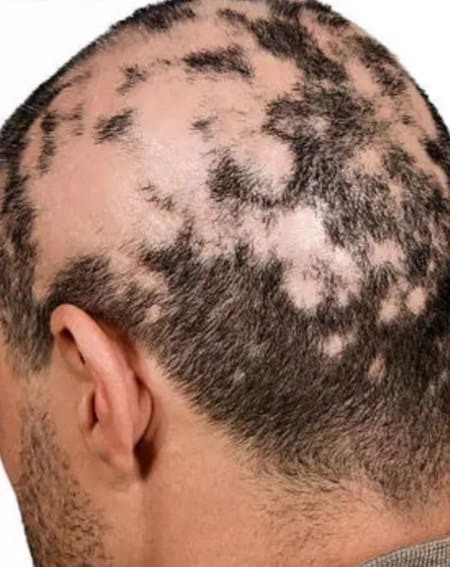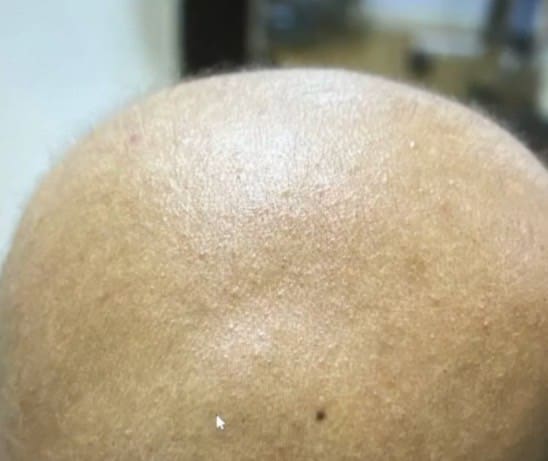Cases of alopecia areata, commonly known as “ghost shaving,” leading to total baldness are not uncommon. Although this situation is rare, there are still a considerable number of clinical reports. Below are some relevant cases and descriptions

Cases of Total Baldness in Adult Patients
In some adult patients, alopecia areata can rapidly worsen in a short period, eventually leading to total baldness. For example, a 35-year-old male patient experienced increasing work-related stress and suddenly noticed multiple bald patches on his scalp. Within a few months, these patches rapidly expanded, leading to the complete loss of all hair, resulting in total baldness. In such cases, patients may suffer from severe self-esteem issues and social anxiety, requiring comprehensive treatment and psychological support.


Total Baldness Related to Autoimmune Diseases
Some cases of total baldness are associated with other autoimmune diseases, such as lupus erythematosus and Sjögren’s syndrome. These patients often experience widespread immune system dysregulation, leading to hair loss not only on the scalp but also affecting eyebrows, eyelashes, and body hair, presenting very noticeable symptoms of total baldness. The treatment of these patients is usually more complex, as it involves controlling multiple autoimmune conditions simultaneously.

Total Baldness Triggered by Psychological Stress
Some patients may develop total baldness following significant life events or prolonged psychological stress. For instance, there have been reports of individuals experiencing large areas of alopecia areata after the death of a loved one, major job loss, or other life changes, which progressed to total baldness within months. These cases suggest that psychological stress may act as a trigger for alopecia areata in certain susceptible individuals.
COVID-19-Related Alopecia Areata
Several global reports indicate that some individuals developed symptoms of alopecia areata after being diagnosed with COVID-19 or receiving a vaccine. These cases show that COVID-19-related factors may trigger alopecia areata, but the onset time varies among individuals, occurring shortly after infection or vaccination, or sometimes after a longer period. As the pandemic has been ongoing for some time, these conditions can only be speculated as one of the possible causes, and it is not particularly meaningful to overly investigate the specific causes. Currently, the most important thing is to seek professional treatment promptly, control the condition, and promote hair regrowth to reduce the impact of alopecia areata on daily life.
Total baldness resulting from alopecia areata is a complex and challenging autoimmune disease. Although it cannot be completely cured at present, timely diagnosis and comprehensive treatment can lead to significant improvement for patients. For each patient, personalized treatment plans and adequate psychological support are crucial for managing the condition. With advances in medicine, the application of new therapies such as biologics offers new hope for patients with total baldness.
